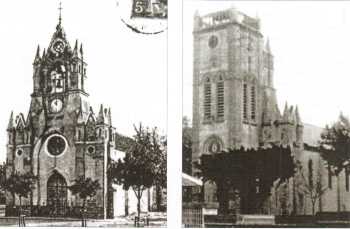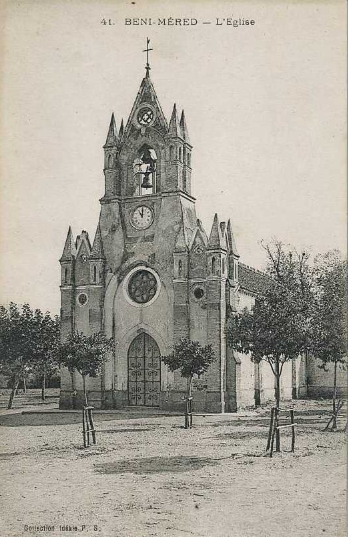The Church of Beni Mered is one of the most symbolic yet little-known historical monuments in Blida, Algeria. Built during the French colonial period, this church reflects not only the architectural style of the 19th century but also the transformations Algeria went through before and after independence.

Origins and Construction
According to historical records, the church was constructed in the mid-19th century, after the French conquest of Algeria in 1830. Its establishment was closely tied to the presence of settlers in the Beni Mered area, a region that became significant following the Battle of Beni Mered (1842), where French troops clashed with Algerian resistance forces (source).

The church was intended to serve the growing European settler community, becoming a religious and social center. Its architectural style followed the typical colonial Catholic design of the time: modest, functional, and adapted to small towns like Beni Mered.
Historical Changes
Over time, the role of the church changed significantly:
- Colonial Era (19th – early 20th century): The church was fully active, serving French settlers and clergy in the area. Priests such as Abbé Blanc played a notable role in its early history (source).
- Post-Independence (1962 onwards): After Algeria’s independence, most settlers left the region. Like many colonial churches across Algeria, the Church of Beni Mered was abandoned and ceased to function as a place of worship.
- Later Transformations: The building, stripped of its religious function, has been repurposed multiple times. In some periods, it served as a storage facility or administrative annex. Its religious symbols gradually disappeared, leaving behind only the structure as a reminder of colonial heritage (source).
What Is It Now?
Today, the Church of Beni Mered no longer serves as a church. It is one of the many abandoned or repurposed colonial-era religious buildings scattered across Algeria. The site stands as a silent witness of Blida’s history, reflecting both the colonial presence and the transformations of Algerian society after independence.
Unfortunately, the monument suffers from neglect and lack of preservation, a fate shared by many colonial-era churches in the Mitidja region. For locals, it remains a point of historical memory rather than active religious practice.
Cultural and Historical Value of the church of Beni Mered
Even though it no longer functions as a church, the Beni Mered Church represents:
- A reminder of the colonial history of Blida.
- A landmark linked to the Battle of Beni Mered (1842).
- A neglected piece of architectural and cultural heritage in Algeria.
Preserving such sites could help future generations understand the complex history of Blida and the Mitidja plain, where local resistance and colonial settlement clashed and coexisted.